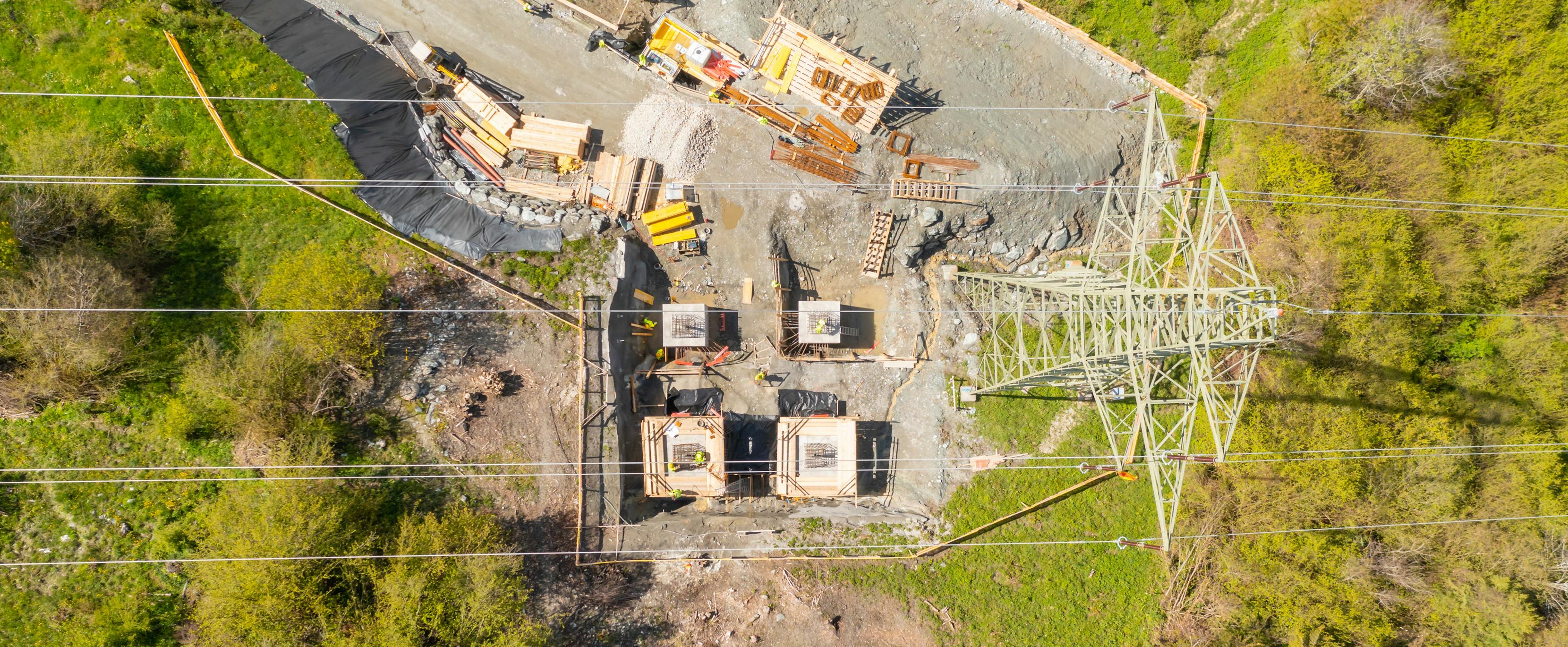Grid Grid project Chamoson – Chippis

Swissgrid’s 220 kV Fionnay–Riddes overhead line transports electricity from the hydroelectric power plant in Fionnay in Valais. Built in the 1950s, this line crosses an area of unstable ground above the villages of Versegères and Prarreyer, on the right-hand bank of the Dranse, at a place known as «Le Diablay», in the Val de Bagnes valley. Geodesic measurements carried out on this line over a period of 25 years have revealed the sliding of pylons 26 and 27, which need to be replaced. Two new pylons are currently being constructed along the line some 15 metres from the existing pylons.
Interlocking foundations using beams made from reinforced concrete
Most ultra-high-voltage lines in Switzerland are situated in zones with natural hazards that are often difficult to avoid. There is only one possible solution: to adapt to the surrounding terrain. For this reason, the location of each pylon is studied and specific technical solutions are applied on a case-by-case basis, according to the danger. The foundations of the two new pylons 26 and 27, in the place known as «Le Diablay», are constructed in an area of unstable ground. Their dimensions have been calculated in accordance with the specific nature of the site: the four bases of the two pylons have been reinforced with 20 cubic metres of reinforced concrete per base and dug to a depth of 6 metres. In addition, they will be interlocked using beams made from reinforced concrete, both in a square and crosswise arrangement. As it is impossible to change the terrain, this interlocking technique limits any differential movement of the four bases. While this area will continue to be subject to measurement activities, the new pylons 26 and 27 on the ultra-high-voltage Fionnay–Riddes line will now be equipped to withstand the terrain of the site. Civil engineering work has been underway since March 2021. The pylons will then be assembled and the conductors (cables) drawn through during the course of the summer. The ultra-high-voltage Fionnay–Riddes line will be put back into service with two new pylons at the start of November 2021.
From avalanches to rock falls
Overcoming the risks associated with areas of natural hazards is central to Swissgrid’s concerns. For years, numerous engineers from different fields have been analysing specific measures to adapt the electricity transmission system installations to the nature of Switzerland’s terrain. The measures used to counter the dangers are as numerous and varied as the dangers themselves. Our engineers are constantly on the lookout for solutions to protect the electricity transmission system, ranging from avalanche walls installed above pylons to divert any possible snow slides to metal protection nets to hold back pieces of rock that might become detached from rock faces, as well as earth dykes to contain debris flow. After all, this system is part of our country’s critical infrastructure. It has to work perfectly, as the electricity transmission system is partly responsible for the security of our country's supply.








